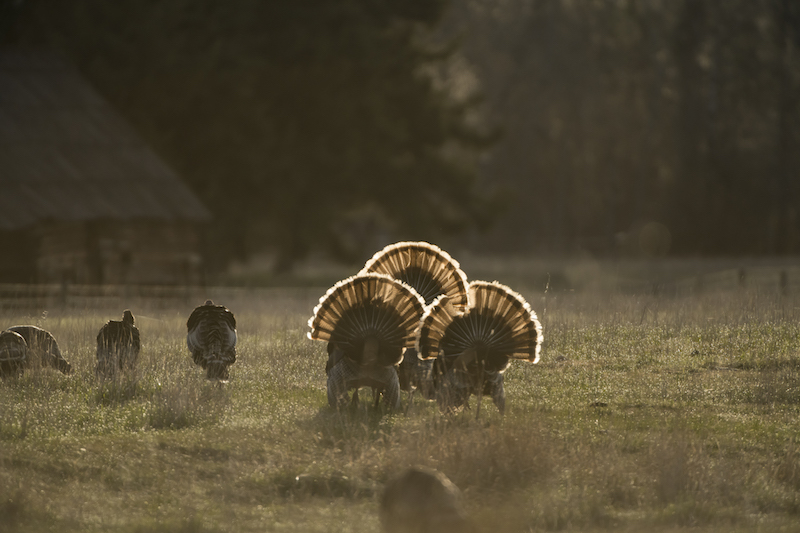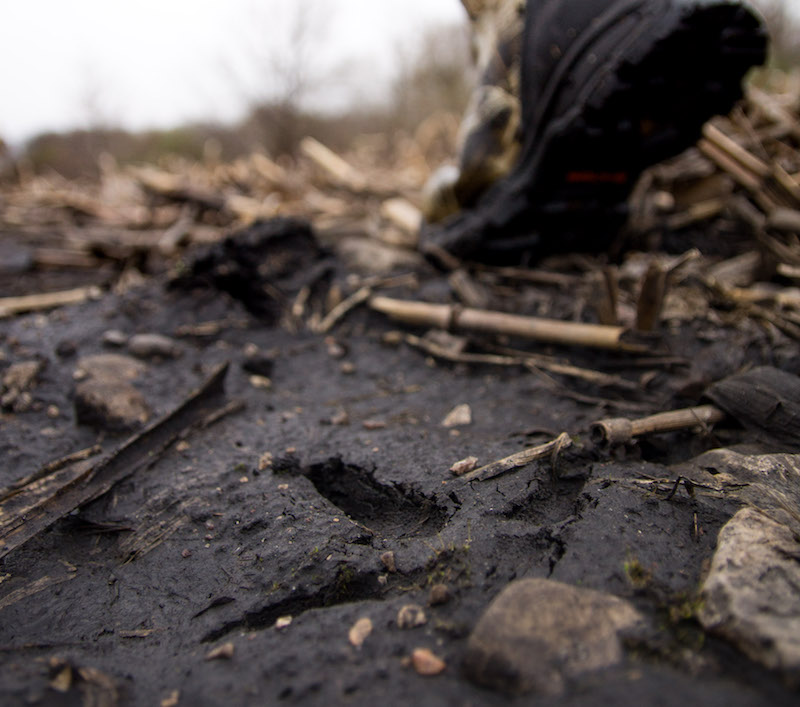Thundering gobbles echoed through the Wisconsin woods as sunlight pierced the horizon on a late-May morning.
Three toms gobbled from their roosts in large white oaks on a ridge point across the valley from a flock of yelping hens. The toms eventually pitched from their roost and marched toward the harem. Unbeknownst to them, I silently awaited their arrival from a brushed-in makeshift blind. When they showed, only two toms escaped to strut again.
Scouting trips preceding that public-lands hunt in Wisconsin’s Driftless Region helped ensure I went home with a bird that day. Scouting isn’t difficult, but you must understand turkey habitat and the sign turkeys leave behind.
Turkeys thrive in a wide range of habitats across the United States. Their most common habitats are big hardwoods, farmlands and river bottoms. You can narrow things down by identifying trees large enough to support roosting turkeys. Large oaks and mature pines are ideal roost trees, but don’t overlook scraggly windrows in open terrain where turkeys have few roosting options.
Turkeys are most vocal when first flying down in the morning, and just before roosting in the evening. You can locate roosts from afar by listening on calm mornings or evenings. If needed, try to make them reveal their position with shock-gobbling, which means loudly mimicking owls, crows, coyotes or other wildlife. Also listen for yelping hens, or breaking branches and flapping wings as turkeys fly up to their perch or down from it. As you scout, scan the ground for droppings and feathers, which often reveal roosting sites. Mark these areas on a map, and set up as close as possible without alerting the turkeys. You’ll be in for an action-packed hunt.
Toms head for field edges or small openings inside the timber after flying down to strut and gobble while searching of hens. Look for drag marks in the dirt made by a tom’s wing tips as it displays. If you find strut zones near a tom’s roost tree, find a hiding place between the two sites to intercept the lonely boy.

Much like deer, determining where turkeys eat is a helpful tool in turkey hunting. Photo Credit: John Hafner
Turkeys spend most of their day eating insects and nuts. Crop fields, river bottoms and burned grasslands offer many options for feeding turkeys, so glass these areas from a distance. That’s low-impact scouting at its best, because you won’t alert birds in the process. Keep binoculars in your vehicle’s center console all spring, and leave for work 30 minutes earlier than usual to locate flocks. If you see feeding patterns, use a plat book or mapping application like OnX Maps to learn who owns the property, and then ask permission to hunt.
Hens begin laying eggs and spending more time on the nest in late April and early May. Hens spend most of that time near their nest, which can usually be found in thick cover to avoid predation. Lush river bottoms, grassy field edges, or dense wooded areas with lots of sunlight hitting the ground offer ideal nesting cover for hens. After strutting alongside hens the first few hours each morning, gobblers get lonely once the hens return to nest. If you hear a gobbler calling at midmorning and later, move in to intercept him.

Scouting turkeys is the beginning of an exciting season. Photo Credit: Erik Barber
Scouting for turkeys and understanding their tendencies can be as exciting as the hunt itself. Hunts merely culminate all your scouting efforts. The more thoroughly you scout, the more likely your springtime homework will pay off.